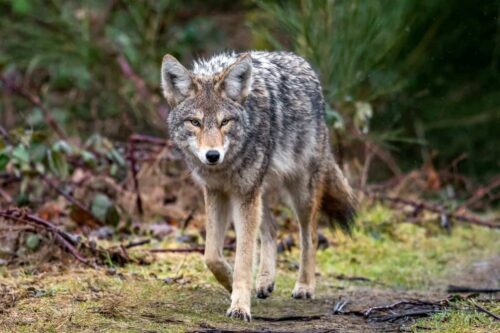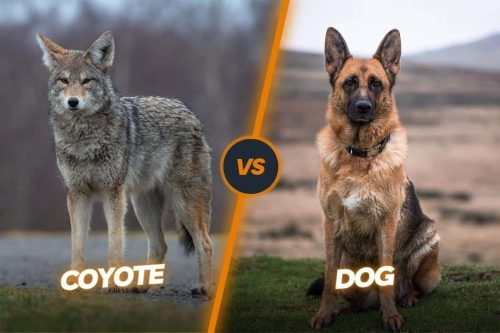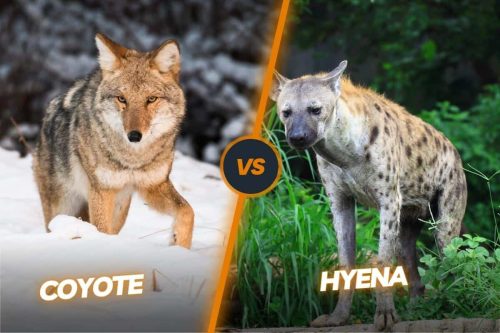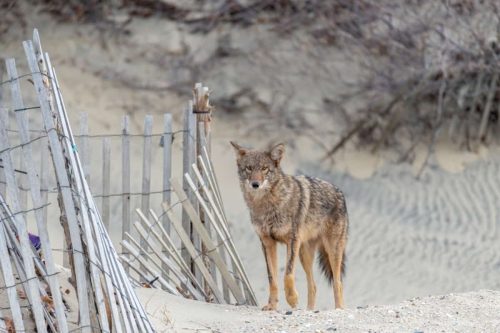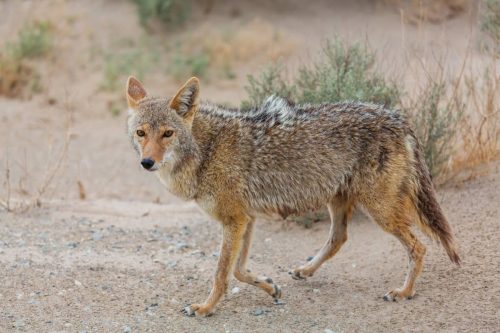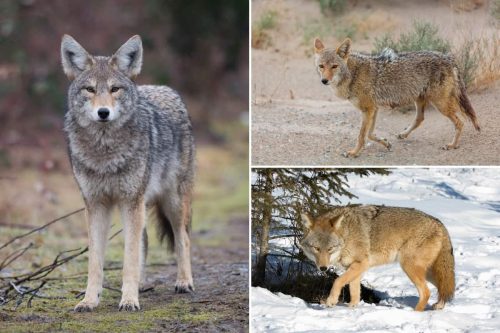Killing Coyotes Makes More Coyotes: Why Coyotes Killing Doesn’t Work
For many decades before, coyotes have become a very big problem for the residents of the United States. Coyotes have reached such a large number that it has become extremely difficult to control them. People are adopting different methods of killing these animals like hunting, trapping, poisoning, and many other cruel methods. Despite adopting these methods, the population of the coyote is continuously multiplying day by day. That’s why people are encountering and experiencing conflict with coyotes more than before.
The situation has become so alarming that coyotes are occasionally attacking pets, defenseless children, and livestock and sometimes also showing aggression towards human beings. To get rid of coyotes, people are introducing new and sometimes inhumane methods for the killing of these wild dogs. But none of them have worked till now as killing coyotes makes more coyotes.
In this article, we are going to explain in detail why the killing of coyotes doesn’t work and what should we actually do to deal with this problem.

Contents
If you want to understand that why the killing of the coyotes makes more coyotes, then first of all you need to understand the social structure and behavior of the coyote. Let’s discuss some residents and transient coyotes to have a deep understanding of their behavior.
Resident coyotes
These coyotes live in packs and mainly breed for increasing their population size. They like to maintain their territory and discourage others from entering their territory. The home range of these coyotes varies from 2 to 30 square miles. The overall pack size and territorial range depend upon the food sources, habitat, and urbanized areas. These coyotes don’t like to engage with human beings and avoid conflicts as much as possible.
Transient coyotes
These coyotes don’t form packs and usually remain alone. They like to cover a wide range of landscapes in search of their mating partner. These are usually young, sick, and most of the orphan coyotes. They like to cover 100 square miles in maintaining their habitat. They like to stay in their own territory but don’t like to defend it. They like to attack livestock to fulfill their dietary needs.
Also read: When is coyote mating season?
Why killing the coyotes doesn’t work?

Killing coyotes as a method of population control or addressing conflicts with humans or livestock often doesn’t work for several reasons. Some of the most prominent reasons are given:
Reproduction and Dispersal
Coyotes have evolved to adapt to changing conditions, including increased mortality. When coyotes are killed, it can actually trigger a biological response that leads to increased reproduction rates and larger litters. This phenomenon, known as the “reproductive rebound effect,” can counteract the intended reduction in population. That’s why it is also said that killing coyotes makes more coyotes.
Coyotes have a unique social structure that’s disrupted by extensive killing. Removing individuals can lead to increased breeding activity and higher survival rates for pups, which can ultimately lead to population growth.
Ineffective Methods
Traditional methods of killing coyotes, such as hunting or trapping, often target specific individuals rather than effectively reducing the population. Coyotes can learn to avoid traps or hunting areas, leading to inefficient outcomes.
Intensive hunting or trapping can cause surviving coyotes to change their behavior. They might become more nocturnal or elusive, making them harder to manage through traditional methods.
Territorial Behavior
Coyotes are territorial animals. When individuals are removed, it creates vacant territories that neighboring coyotes may fill. New coyotes moving in can potentially reproduce, again counteracting the intended reduction. Coyotes have the ability to disperse over large distances, which can lead to a phenomenon known as the “sink effect.” Even if coyotes are killed in one area, individuals from surrounding areas can move in to fill the vacant niches.
Compensatory Rebound:
In ecosystems, predator-prey relationships are complex. If coyote numbers are reduced, prey populations (like rodents) can increase due to reduced predation pressure. This, in turn, can lead to higher survival rates for coyote pups due to increased food availability.
Costly removal
It is difficult to catch animals like coyotes as these are highly intelligent animals. You also need to spend a lot of money to get rid of this animal. You also need to hire a skilled trapper or sharpshooter for this purpose. These experts would also need to spend many hours to catch or target the coyotes.
Inhumane trapping methods
There are several inhumane trapping methods that are deployed for this purpose. The most common devices for capturing the coyote are neck snares and leg-hold traps. These methods could cause severe injuries, pain, and suffering. Sometimes pets also become the victims of these trapping methods which is really heart-breaking. Some other useful wild animals are also trapped during these practices and causing a lot of suffering and eventually death for them.
Unintended Consequences
Intensive killing can disrupt the balance of an ecosystem, affecting other wildlife species and potentially creating unforeseen ecological problems.
In many cases, a more holistic approach is recommended, involving a combination of non-lethal strategies such as education, public outreach, habitat modification, and coexistence measures. These approaches can help reduce conflicts and promote a healthier balance between human activities and wildlife populations.
What methods do work?

You must keep in your mind that the coyotes are going to stay here but we must devise methods how we can live with them effectively without raising any conflicts. There are several such peaceful methods available that have been highly beneficial in dealing with coyotes and preventing conflict with them. These methods have been implemented in several communities and are working very well. Some of the most prominent methods are given as:
Education and Outreach
Educate communities about coyote behavior, ecology, and the importance of coexisting with wildlife. Public awareness campaigns can help people understand how their actions can attract or deter coyotes.
Habitat Modification
Reduce attractants by securing trash cans, compost bins, and pet food, which can inadvertently draw coyotes into residential areas.
Livestock Protection
Implement proper animal husbandry practices to protect livestock from coyote predation. This might involve using guardian animals (such as dogs), secure fencing, and keeping animals indoors at night. Keep pets on a leash when walking them and supervise outdoor activities, especially during dawn and dusk when coyotes are most active.
Hazing Techniques
Encourage coyotes to maintain their natural fear of humans by using non-harmful hazing techniques, such as loud noises, shouting, and throwing objects. It has been a very effective method in deterring animals from your property. It can maintain the fear of human beings in coyotes.
Urban Planning
Design urban landscapes with buffer zones between natural habitats and human developments to minimize opportunities for coyotes to access urban areas.
Community Collaboration
Involve local communities in decision-making processes about coyote management. Engaging with residents can lead to more effective and accepted strategies.
Lethal Methods as Last Resort
If lethal control becomes necessary due to extreme safety risks, ensure it’s carried out by trained professionals following ethical and legal guidelines. However, it’s important to exhaust non-lethal options before resorting to killing.
Does Killing Coyotes Increase Their Population?

Yes, killing coyotes can potentially increase their population, a phenomenon known as the “compensatory response.” This counterintuitive effect occurs because coyote populations have evolved to respond to changes in their environment, including increased mortality. When a significant number of coyotes are killed, several factors can contribute to an increase in the population, Reproductive Rebound, Territorial Behavior, Immigration, etc.
Responsible Conservation and Game Management of the coyotes
Responsible conservation and game management of coyotes involves a comprehensive approach that takes into account the ecological role of coyotes in their ecosystems, their interactions with humans, and the need to minimize conflicts while maintaining a healthy balance. Here are some key principles to consider:
Research and Monitoring
Conduct research to understand local coyote populations, behavior, movement patterns, and ecological interactions. Regular monitoring helps inform management decisions.
Population Dynamics
Recognize that coyote populations can adapt and respond to changes in their environment, including increased mortality. Be cautious of overemphasizing lethal control, as it can lead to unintended consequences.
Non-Lethal Strategies
Prioritize non-lethal strategies for mitigating conflicts. This can include educating the public, securing attractants (e.g., trash, pet food), implementing livestock protection measures, and promoting responsible pet ownership.
Professional Guidance
Involve wildlife professionals, ecologists, and conservationists in management decisions. Their expertise can help develop effective strategies that consider both ecological and social factors.
Community Engagement
Engage local communities in decision-making processes about coyote management. Involving residents can lead to more successful and accepted solutions.
Long-Term Sustainability
Aim for solutions that promote long-term sustainability and balance in ecosystems. Focus on addressing underlying factors that contribute to conflicts rather than solely on population reduction.
Collaboration
Collaborate with other agencies, organizations, and stakeholders involved in wildlife management to share information, resources, and expertise.
Ultimately, responsible conservation and game management of coyotes requires a holistic and adaptive approach that considers the complexities of ecosystems, the importance of wildlife in those ecosystems, and the need for coexistence between humans and wildlife.
Conclusion
The intricate relationship between killing coyotes and their population dynamics reveals that lethal control methods often backfire by triggering increased reproductive rates and territorial expansion. It has been proved that killing coyotes makes more coyotes. A more effective approach involves fostering coexistence through public education, responsible pet ownership, and employing non-lethal methods to mitigate conflicts. By understanding the ecological principles at play, we can work towards creating a harmonious balance between humans and coyotes in our shared ecosystems.

Izzy is an experienced ranch worker who has a passion for exploring nature and getting up close to wildlife. With her connections to various animal organizations, Izzy is well-versed in animal care and rehabilitation.

